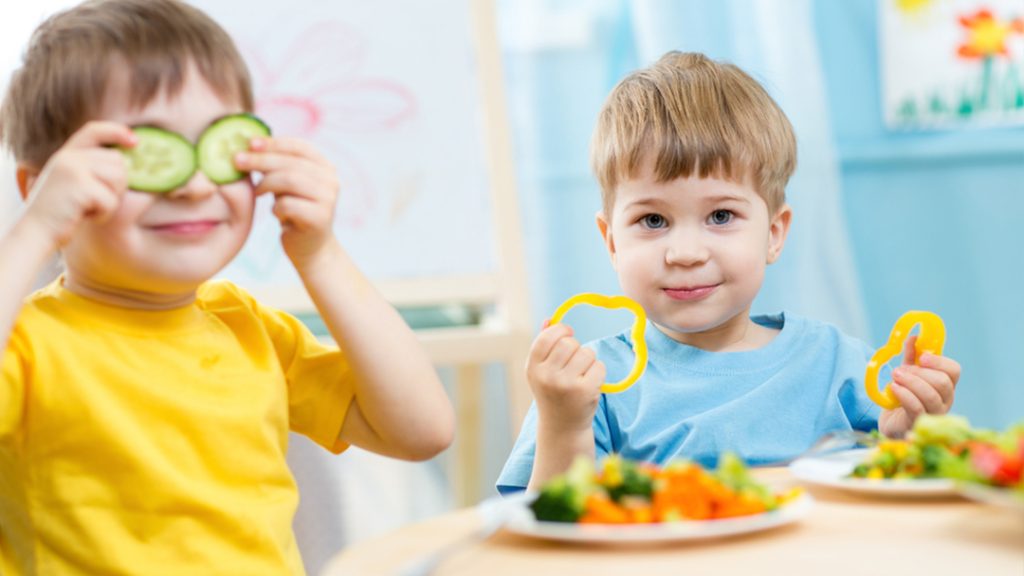
How To Deal With Picky Eating? – Exploring Practical Tips
Dealing with a picky eater can be incredibly frustrating for parents. It’s common for kids to go through phases where they refuse certain foods or have a limited diet. However, an extremely restricted diet over a long period could lead to nutritional deficiencies. If you’re looking for guidance on how to deal with picky eating, have no fear – there are effective techniques to encourage them to try new healthy options. With patience and the right approach, you can support your child in developing healthy eating habits for life.
What is Picky Eating?
Some key characteristics of picky or fussy eating include a strong preference for plain or starchy foods like potatoes, bread, pasta, etc., and rejecting foods with certain textures, tastes, smells, or appearance. Children with picky eating disorders tend to have a limited variety of about 5-10 foods they are willing to eat consistently. This restricts their ability to get essential nutrients from a balanced diet. Picky eating is quite normal; with consistency, encouragement, and a healthy meal plan for kids, the transition to trying new foods can be made easier.
How to Deal with Picky Eater Kids?
Identify the cause
Before attempting to solve the problem, it’s essential to understand what could be triggering your child’s reluctance towards new foods. Here are some common causes of picky eating in children:
- Sensory issues: Disliking certain textures, smells, or tastes of foods.
- Lack of exposure: Not being introduced to various foods when starting solid foods.
- Control/independence: A way for children to exert control and independence over what they eat.
- Peer influence: Following the eating habits of friends who are also picky.
- Allergies/intolerances: Issues with specific food ingredients.
- Stress/anxiety: Feeling stressed or anxious around mealtimes can impact eating.
Encouraging Adventure at the Table
 Engaging ways to display snacks and meals can make nutrition fun and help overcome picky tendencies. A few creative food presentation ideas include:
Engaging ways to display snacks and meals can make nutrition fun and help overcome picky tendencies. A few creative food presentation ideas include:
- Smiley Face Skewers: Cherry tomatoes, cucumbers, cheese cubes, or olives made into smiley faces.
- Rainbow Platter: Arrange different coloured fruits and veggies into a colourful rainbow pattern.
- Topping Bar: Let kids customise baked potatoes, toast, or pita bread at a self-serve station.
- Kabobs: Cube cheese, meats, and veggies for easy sampling on sticks.
Try Some Healthy Snacks for Kids
When dealing with a picky eater, including nutritious snacks is critical to meeting their daily needs. Here are some healthy food ideas for picky eaters:
- Vegetable sticks like carrot, cucumber or bell pepper with hummus or tzatziki dip
- Fruits like bananas, grapes, and berries cut into bite-sized pieces
- Hard-boiled eggs cut in half or quarters
- Nut butters like peanut or almond butter on celery or rice cakes
- Fruit blended into yoghurt and frozen into cubes
- Rice cakes or oatcakes topped with nut butter or mashed banana
- Popcorn made without salt and butter for older children
Cooking with Kids
 One of the best ways to get picky eaters interested in varying their diet is by involving them in food preparation. Start with simple recipes using a few basic ingredients they already enjoy:
One of the best ways to get picky eaters interested in varying their diet is by involving them in food preparation. Start with simple recipes using a few basic ingredients they already enjoy:
- Fruit kebabs – thread favourite fruits onto wooden skewers
- Homemade pizza – let them top store-bought pizza bases
- Veg sticks and dip – encourage them to help prepare crudites
- Cupcakes – allow them to choose and add decorations
- Omelette or frittata – crack eggs and add selected fillings together
- Sandwiches – let them choose filling and spread for mini wraps
- Cookies – try new baking recipes together using ingredients like mashed banana
Make Mealtimes Friendly
The way you approach family meals sets the tone about food. Removing distractions like TVs and devices and making eye contact when your picky eater eats promotes a relaxed environment:
- Lead by example; don’t say, “You have to eat this” while pushing certain foods. Instead, gently encourage with positivity.
- Avoid bribery, threats or punishments that cause food anxiety in kids—praise independent tasting over finishing plates.
- Allow them to control by offering just one new recipe to try alongside loved dishes at a meal rather than springing too many changes at once.
- Keep mealtimes social by including all family members and discussing the day – the focus shifts from just eating. Serve modest child portions to ease the pressure.
Food and Fun
For parents navigating the challenge of picky eaters, integrating a bit of fun can make mealtimes smoother. Here are some simple, engaging ideas to encourage those tentative tastebuds:
- Broccoli as Mini Trees: When serving broccoli, frame it as ‘mini trees.’ This visual can make it more approachable for kids.
- Juice Mixing: Offering a selection of juices and allowing kids to create their mix can make them more enthusiastic about drinks.
- New Food Introductions: Occasionally introduce a new food item, framing it as a ‘food adventure.’ Keep the atmosphere light and pressure-free.
- Edible Art: Use food items to allow kids to create art on their plates. This makes the food more interactive and engaging.
- Spaghetti Tales: Use storytime to make pasta meals interesting. Simple tales about what the spaghetti strands might represent can make them more appealing.
A Balanced Diet for Picky Eaters
Although picky eating is normal to an extent, it’s essential to ensure a balanced diet for kids and that the child’s limited eating doesn’t impact their overall health and development in the long run:
- Focus on covering the five major food groups daily – proteins, dairy, grains, fruits and vegetables. Allow some flexibility around preferred choices.
- Balance smaller, more frequent meals if a toddler or preschooler has a poor appetite for big portions. Offer healthy snacks between scheduled meals.
- Add nutritional value to foods kids enjoy, like pancakes, muffins or pasta, by blending in puréed or grated vegetables that picky eaters won’t notice.
- Ensure iron-rich and calcium sources like meat, fish, eggs and dairy are included regularly to support growth. Iron-fortified cereals can supplement, too.
- Stay positive and patient while involving your child in choosing healthy options whenever possible. Celebrate victories, big or small, for trying new recipes.
- Monitor growth and development – if certain deficiencies are suspected or weight gain stalls due to extreme picky eating, consider consulting a paediatrician.
Supporting Healthy Eating Habits at Tappy Toes Nursery
Even if you succeed at home in dealing with picky eating, variety may be an ongoing challenge when your child is cared for outside the home. At Tappy Toes Nursery, we aim to reinforce these healthy eating strategies through mealtime experiences. Our child-led curriculum nurtures healthy development through creative, multi-sensory learning activities inspired by children’s interests and growth stages.
We understand that exposing children to new foods takes time and repeated exposure. Our teachers work with families to ensure consistency between home and school. While respecting individual appetites, we gently encourage tasting various nutritious foods. Providing positive role models, we help normalise exploration with taste and texture. With a nurturing approach focused on the whole child, we support families in establishing healthy habits around food.
Conclusion
While consistency is critical, remember not to take picky eating personally. Your child isn’t deliberately trying to test your patience. With creative cooking, friendly meal environments and involving them in the kitchen, even the fussiest eaters will slowly come around to trying new foods in their own time. At Tappy Toes Nursery, we encourage kids daily to explore colourful plates and discover enjoyable eating experiences with their friends. With patience and a supportive approach, picky eating phases can be positively navigated together.

